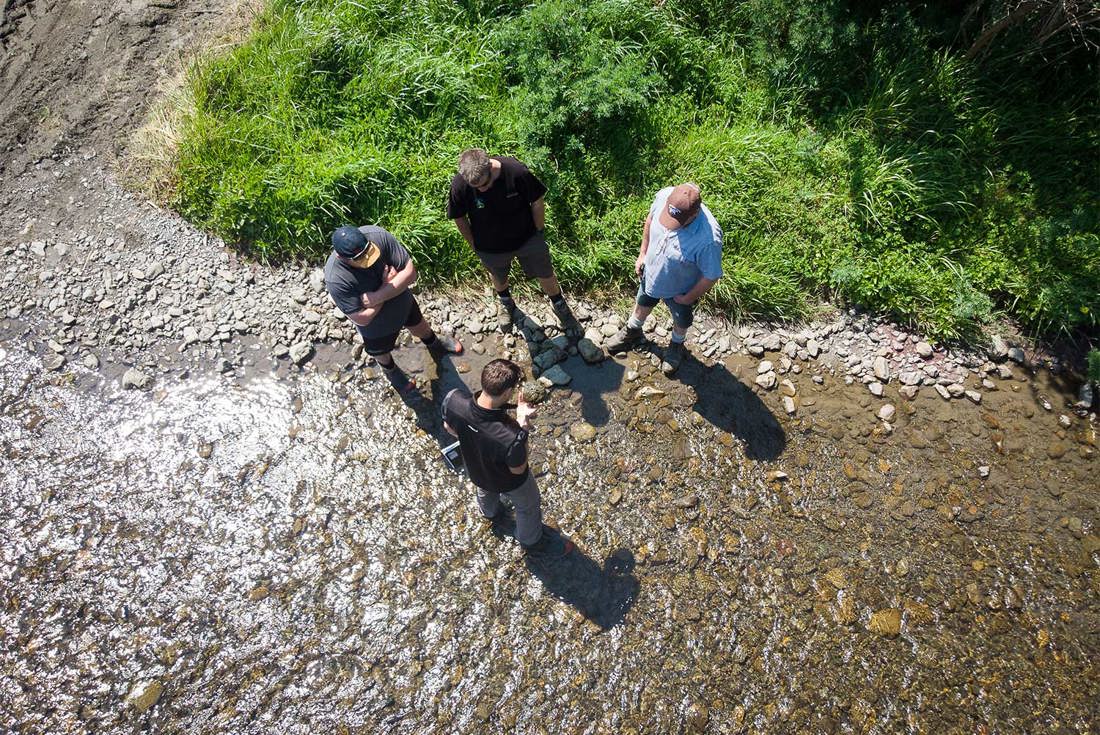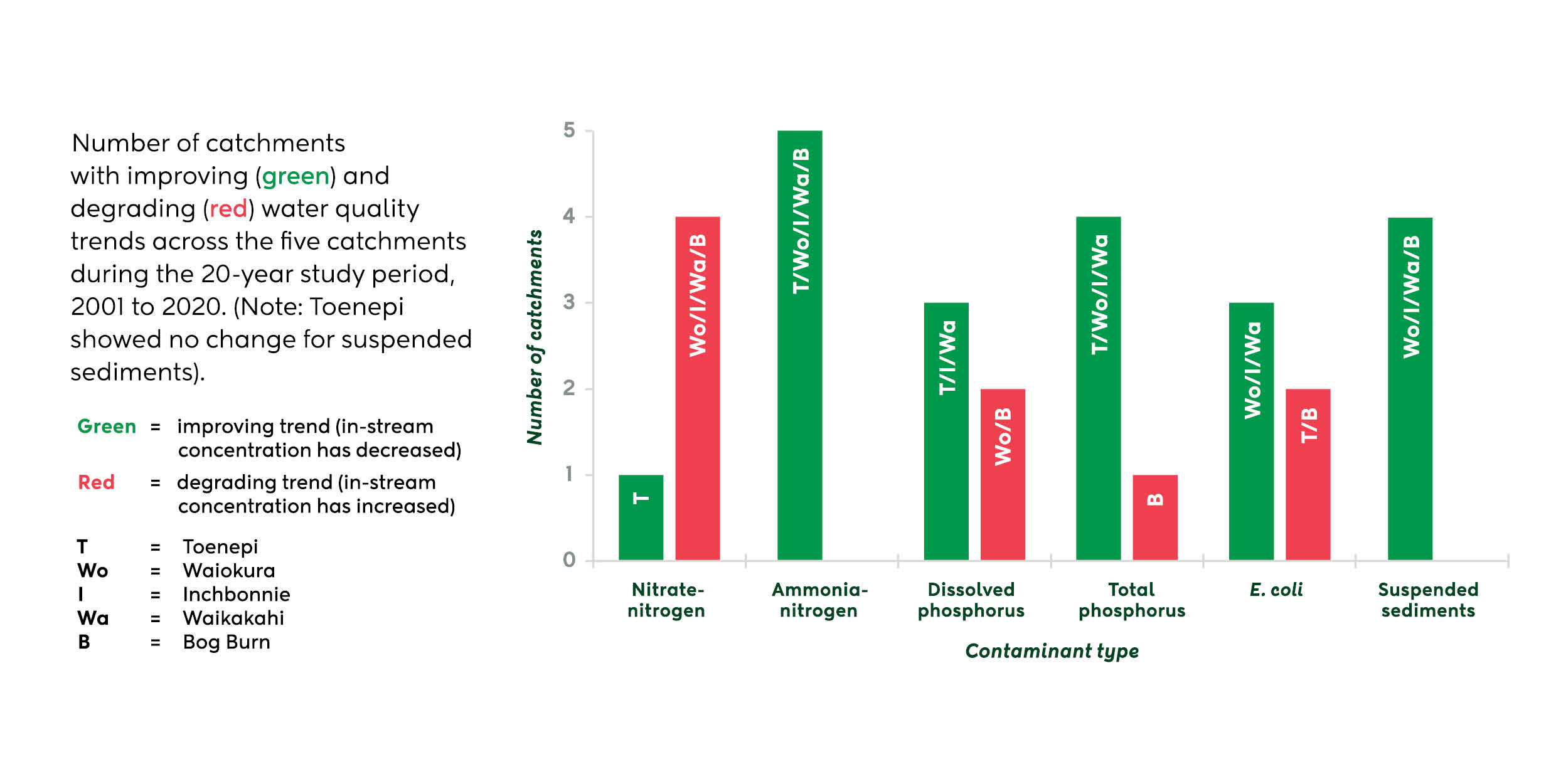Monitoring water quality in catchments
2 min read
This long-running AgResearch led project, supported by DairyNZ, demonstrated that adopting good farming practices on dairy farms to reduce contaminant loss into waterways improved water quality.
The Best Practice Dairy Catchments project ran from 2001-2010 in five small dairy-dominated catchments. It drew on the latest science to provide farmers with advice and helped them develop farm plans with mitigation strategies to reduce contaminant loss.
The project continued to monitor water quality and carry out farmer practice surveys from 2011 to 2021 to provide long-term data collection. This allowed water quality trends to be assessed over a 20-year period to see how on-farm practice change affected water quality.

Over the full 20-year monitoring period, two-thirds of in-stream water quality trends were improving, but several were degrading, especially nitrate-nitrogen.
Analysis of this globally unique, long-term dataset has helped show how extension advice can support you to implement good farming practices and improve water quality. It has also shown that detecting water quality improvements takes time and long-term monitoring.
These improvements were attributed to farmers actioning good farming practices around effluent management, wintering, and shifting from flood to spray irrigation. As part of the Dairy Clean Streams Accord, farmers also excluded stock from waterways and undertook riparian planting which will have also decreased contaminant concentrations.
Good farming practices have decreased ammonia-nitrogen, phosphorus and suspended sediment concentrations in waterways in project catchments. However, an increase in nitrate-nitrogen concentrations was caused by transitioning from flood to spray irrigation in Waikakahi, and an increase in stocking rates and nitrogen fertiliser use. Despite gains in catchments using good farming practices, there’s room for further improvement.

Farmers were involved in actioning practice changes on farm. They also attended field days and workshops, and provided information on their on-farm actions through regular farm practice surveys.
This Science Direct webpage summarises the project findings:
Katrina joined DairyNZ four years ago, after working as a university research scientist at Ulster University, and Queen’s University Belfast, in Northern Ireland. She has expertise in phosphorus and leads the DairyNZ’s freshwater science research programme.
Research teamCraig is responsible for developing DairyNZ’s water quality research programme, and often leads freshwater science evidence preparation in plan change hearings and the environment court. Craig came to DairyNZ after spending 18 years as a water quality scientist at NIWA.
Research teamNow’s the perfect time to check in, plan, and set up for a strong season. We’ve pulled together smart tips and tools to help you stay ahead all winter long.
Whether you prefer to read, listen, or download handy guides, we’ve got you covered with trusted tools to support your journey every step of the way.